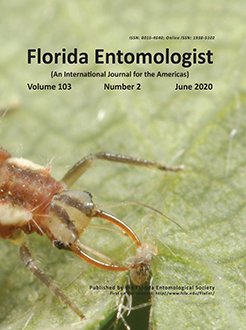The larval stages of cabbage maggot, Delia radicum (L.) (Diptera: Anthomyiidae), attack the roots of cruciferous crops and often cause severe economic damage. Although lethal insecticides are available to control D. radicum, efficacy can be improved by the placement of residues near the roots where the pest is actively feeding and causing injury. One such method is drenching seedlings with insecticide before transplanting, referred to as “tray drench.” The efficacy of insecticides, when applied as tray drench, is not thoroughly understood for transplants of broccoli and cauliflower. Thus, a series of seedling tray drench trials were conducted on transplants of these 2 vegetables using cyantraniliprole, chlorantraniliprole, clothianidin, bifenthrin, flupyradifurone, chlorpyrifos, and spinetoram in greenhouse and field settings. In the greenhouse trials, the severity of D. radicum feeding injury was significantly lower on broccoli and cauliflower transplants when drenched with clothianidin, bifenthrin, and cyantraniliprole compared with untreated controls. In broccoli field trials, incidence and severity of feeding injury was lower in seedlings drenched with cyantraniliprole and clothianidin, as well as a clothianidin spray at the base of seedlings, than the use of spinetoram, chlorpyrifos, flupyradifurone, and chlorantraniliprole. In a cauliflower field trial, tray drench application of cyantraniliprole significantly reduced the severity of D. radicum feeding injury in seedlings than untreated controls. Also, the fresh weight of plant shoots was significantly greater in cyantraniliprole tray drenched plants than untreated controls. In a different tray drench trial with cauliflower, the severity of cabbage maggot injury was significantly lower on plants that received cyantraniliprole at wide plant spacing of 30.5 cm (high dose) than narrow spacing of 17.8 cm (low dose) compared with untreated controls. The implications of these results on D. radicum management for transplanted cruciferous crops and impact on the environment are discussed.
How to translate text using browser tools
10 July 2020
Evaluation of Seedling Tray Drench of Insecticides for Cabbage Maggot (Diptera: Anthomyiidae) Management in Broccoli and Cauliflower
Shimat V. Joseph,
Shanna Iudice

Florida Entomologist
Vol. 103 • No. 2
June 2020
Vol. 103 • No. 2
June 2020
bifenthrin
Brassicaceae
central coast of California
clothianidin
cyantraniliprole
Delia radicum




